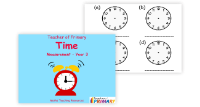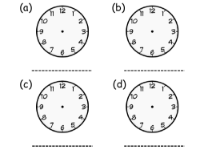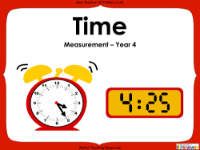Time - PowerPoint

Maths Resource Description
In this Year 3 Maths teaching resource, students embark on a journey to master the concept of time, learning to tell and write it from both analogue and digital clocks. The lesson starts with a refresher on how to read time on these clocks. An analogue clock is introduced as having a face divided into 60 sections, each representing one minute, though not all analogue clocks are marked in this way. Some may only have 12 sections with numbers, some with only a few numbers, and others with none at all, requiring students to estimate the time. They learn that the long hand indicates minutes, while the short hand points to the hour. Various times such as 'half past', 'quarter past', and 'quarter to' are explained with visual aids showing the positions of the hands on the clock face.
The lesson also delves into understanding digital clocks, where time is read as minutes past the hour, and teaches how to translate this into analogue time representations. Students learn the difference between the 12-hour clock, which uses 'am' and 'pm' to distinguish between morning and afternoon, and the 24-hour clock, which runs continuously from 00:00 to 23:59. They practice converting times between these formats and are introduced to Roman numerals on clock faces, enhancing their ability to tell time from a variety of clock designs. The lesson concludes with exercises on estimating time and a comprehensive activity where students fill in a table converting times between words, the 12-hour clock, the 24-hour clock, and analogue clock representations.



